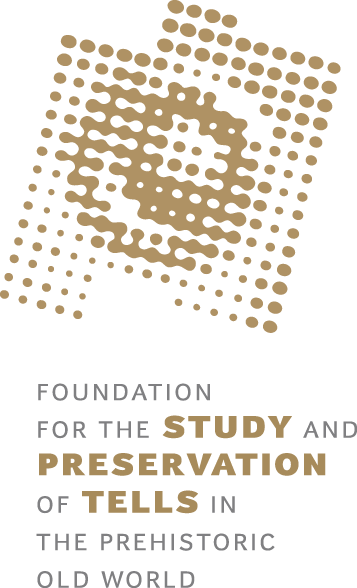
Our Mission
Funding
FUNDED PROJECTS
Donations
Who We Are
The Very End of Tel Tsaf and the WHY Question: Tracking Abandonment Patterns in the Jordan Valley, Israel
Danny Rosenberg (Haifa, Israel)
Tel Tsaf in the Jordan Valley, Israel (c. 5,200–4,700 cal BC), is a c. 5 ha site consisting of three low hills that were formed by laminated layers of sediment deposited by the Pleistocene Lake Lisan. It was first identified in the 1950s with small-scale excavations (c. 100 m2) conducted from 1978–1980 and 2004 to 2007, when approximately 800 m2 of archaeological remains were exposed, mainly in Area C on the main hill. In recent years, Tel Tsaf was excavated by an international and interdisciplinary team led by Prof. Danny Rosenberg from the University of Haifa and Prof. Florian Klimscha from the Landesmuseum in Hanover.
The excavations of the main excavation area (Area C) revealed the following stratigraphic sequence: (I) Meagre and scattered remains belonging to Late Byzantine to Early Islamic activities immediately below the site topsoil; (II) A sterile layer of fine yellowish sediment distributed over part of the site, probably deposited by wind, reaching over 1 m in thickness at the highest point of the tel; (III–IV) Middle Chalcolithic remains, c. 2 m in thickness, characterized by massive, well-built, mudbrick rectilinear elements of buildings. Area C revealed remains of four large courtyard buildings (Buildings I–IV), as well as many other wall segments and various installations.
Most of the latter are silos and cooking facilities. A well and associated activity surfaces were found in the western part of the site, and several occupation layers were noted with no clear architectural features in different parts of the site. Five Middle Chalcolithic burials have been discovered so far in Area C, located in and around the silos. One burial, in Building I, contained a female skeleton with hundreds of ostrich eggshell beads arranged in a chain around her waist and a small copper awl, which was later identified as the earliest evidence of metallurgy in the southern Levant.
Other finds include unique decorated pottery termed “Tel Tsaf ware” and superb preservation of organic materials. Apart from the copper awl found in the burial, the site includes many other objects indicative of long-distance contacts: north Levantine Ubaid pottery, a clay stamped sealing, non-local figurines and beads, including Anatolian obsidian, Egyptian olivine beads, shells from the Nile River and the Mediterranean Sea, ground stone tools, as well cotton fibers that were probably originated from Pakistan. These non-local artefacts suggest that people at Tel Tsaf had connections with remote social groups or at least engaged in trade with surrounding regions situated within long-distance networks.
Mudbricks are one of the most prevalent types of artefacts at Tel Tsaf, and these were used as building materials for all structures and for many of the other features. Unfortunately, as all mudbricks at the site are sundried, these are highly susceptible to damage by environmental and other agents. In fact, the site is at high risk of severe damage due to this reason, and urgent measures are needed to protect the unique remains.
The current project, initiated in 2013, aims to explore human-environmental interaction and its social, economic, and culinary attributes, specifically the establishment of the Mediterranean diet in the region and its contextual, social, and ecological settings. The research also addresses the question of why Tel Tsaf ceased to exist, with no clear evidence for the reasons behind this event (no clear distraction layer was so far documented at the site). We aim to provide a multi-faceted image of the factors that may have played a role in the processes that pushed the Tel Tsaf community to leave and never return to the site. The FSPT support in 2023 will be directed toward the analysis of the micro- and macro-botanical remains, mainly from sediments and vessels.
The 2024 project work funded aims to delve further into the identification of the plants used by the Tel Tsaf communities, specifically evidence that were retrieved from around the many silos found in Building CI at the site. Tel Tsaf, with its superb preservation of organic materials and storage facilities, offers ideal conditions to study micro- and macro processes of the accumulation of agricultural yields and their organisation by the community and for the reconstruction of dietary practices. The current research focuses on a residue analysis of pottery vessels and grinding stones. We will aim to extract starch granules from these vessels and tools and through their analyses provide direct evidence as to what type of plants were stored, cooked, processed, or stored in these implements. We aim to use these for plant species identification, however also test degradation and other processes that may reflect on the type of activities they were involved with.

